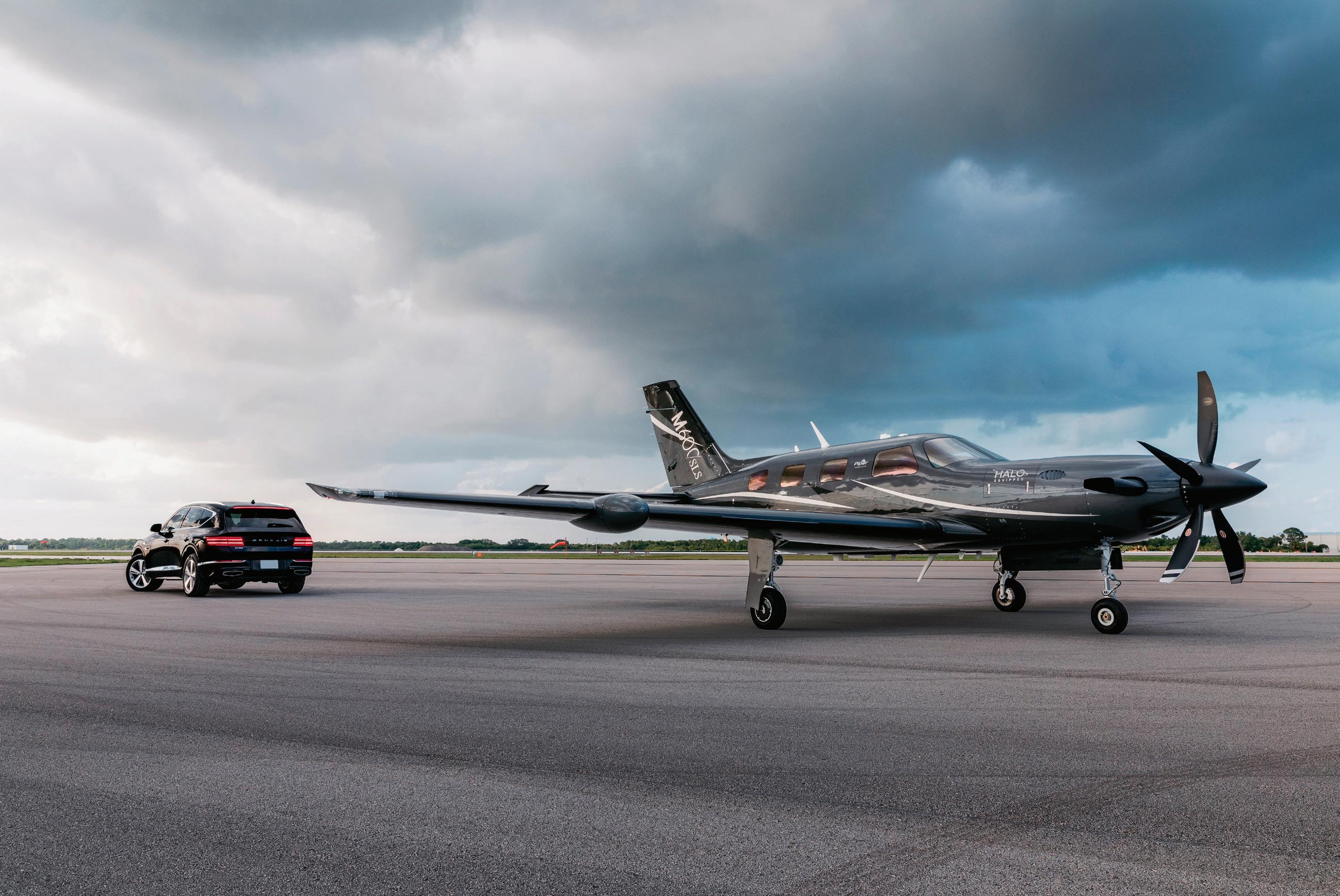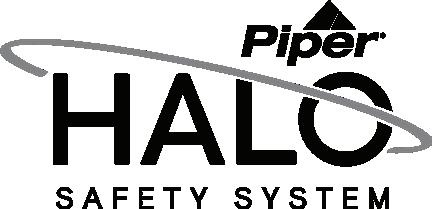
6 minute read
Piper Announces Unpaved Field Approval
PIPER ANNOUNCES UNPAVED FIELD APPROVAL FOR M600/SLS
Piper Aircraft, Inc. has been awarded FAA approval for its flagship product—the Piper M600/SLS single engine turboprop aircraft—to be operated from unpaved fields. Piper has received numerous requests for unpaved field certification from several global markets, and is pleased to announce kit approval has also been completed for Canada, the UK, and Europe (EASA). Brazil certification is expected in early 2023.
Advertisement
All 2022 M600/SLS aircraft, starting with serial number 198, are factory provisioned to operate on unpaved fields with the incorporation of Supplement #5 into the approved aircraft Pilot’s Operating Handbook. Fielded 2016-2021 M600 aircraft equipped with five blade propellers also have the option to be modified by Piper Kit #88705-702 to accommodate the same unpaved field operations. The primary kit components include a slightly redesigned nose fork and scissor link to handle unpaved field surface inconsistencies, the installation of a small nose gear wheel well plate cutout allowing the nose wheel to stow properly with the gear retracted, and a POH supplement. “The Piper M600/SLS is known for its performance, reliability and versatility over a wide array of general aviation missions,” said John Calcagno, President and CEO of Piper Aircraft, Inc. “Now, with the addition of unpaved field capability, the M600’s versatility and asset value is taken to a whole new level.”
Piper Aircraft is running an introductory promotion for all M600 unpaved field kits ordered before November 30, 2022. All M600 owners are encouraged to contact their local Piper Dealer/Service Centers to learn more.
About the Piper M600/SLS
The Piper M600/SLS with HALO Safety System is the first general aviation aircraft certified with Garmin Autoland. The revolutionary system supports digital technology that safely lands the aircraft at the nearest suitable airport in the event that the pilot is incapacitated. Additionally, the Garmin G3000 avionics suite includes Autothrottle, Autoland, Emergency Descent Mode, Electronic Stability Protection, Surface Watch, SafeTaxi, and Connectivity, all of which are designed to enhance safe operation of the aircraft. Beyond the flight deck, the six-seat M600/SLS is powered by a Pratt & Whitney PT6A-42A 600 SHP engine. The aircraft has a maximum cruise speed of 274 ktas/507 km/h, a max range of 1,658 nm/2,748 km, and a standard useful load of 2,400 lbs/1,089 kg. •
Visit www.piper.com for more information.

Scan to watch a video demonstration.
Land Safely – No Pilot’s License Required.
With the Piper M600/SLS, having a pilot’s license is no longer necessary to ensure a safe landing. Equipped with the Halo Safety System featuring Garmin Autoland, the aircraft will autonomously land when activated in the event of an emergency. Learn how the Piper M600/SLS and its innovative features can benefit you and your family.
www.piper.com 1.772.299.2403
View our upcoming event schedule by visiting https://bit.ly/skytechevents

Skytech is an Authorized Piper Sales & Service Center CT, DC, DE, MA, MD, ME, NC, NH, NJ, NY, PA, RI, SC, VA, VT, WV 888.386.3596 www.skytechinc.com PiperSales@skytechinc.com
200 Airport Drive Westminster, Maryland 21157 www.skytechinc.com AIRCRAFT CHARTER • SERVICE • SALES MANAGEMENT • ACQUISITION • FBO SERVICES
FIRST-CLASS PRESORT U.S. POSTAGE PAID
LUTHERVILLE. MD PERMIT NO. 171
BY SEAN WALLACE - Director of FBO Operations/Safety Manager
The Race to Sustainability in Aviation
The world of aviation has always been a fast-paced environment with unbelievable technology. Modern airliners allow hundreds of people to travel anywhere in the world simultaneously, almost as fast as the sound they emit. However, an immense amount of power is needed for a half million pounds to become airborne and travel at .8 Mach. As incredible as they are, our current power plants are not sustainable for future use. Currently, power is derived from fossil fuel that is burned at an astonishing rate. The amount of fuel burned as travel has populated over the decades has significantly increased carbon emissions to the point where the long-term use of conventional fuels is no longer sustainable. At the United Nations Climate Change Conference in November, U.S. Transportation Secretary Pete Buttigieg announced the U.S. Aviation Climate Action Plan, which, for the first time, sets out to achieve net-zero greenhouse gas emissions from the U.S. aviation sector by 2050. An ambitious goal but a necessary one considering our current structure creates 5.6 tons of carbon dioxide on a round trip for a family of four to fly from San Francisco to New York. As a comparison, according to the EPA, a car produces roughly 4.6 tons a year. The good news is that even though the U.S. Aviation Climate Action Plan was just announced, there have already been years of development in sustainable aviation, making the 2050 deadline more achievable.
Electric aviation is one of the forerunners and has come a long way, with some milestone achievements happening over the last year. Rolls-Royce's "Spirit of Innovation" became the world's fastest electric vehicle, hitting 345 miles per hour during a flight, proving that electric aircraft can travel as fast as their conventional counterparts. In May, the electric vertical takeoff and landing (eVTOL) Alia from Beta Technologies made a 1,403-mile trip with seven charge stops. Proving that electric aviation can be used for travel despite requiring frequent charging stops. Though the travel limitations are apparent with heavy batteries and charge times longer than a routine fuel stop, United Airlines recently invested in electric. United has taken note of the possibilities electric aviation offers for short commuter flights and has invested in 100 electric aircraft from manufacturer Heart Aerospace with hopes to launch commuter flights on these 19-seater planes in 2026, well before the FAA deadline of 2050. While United has bet on electric aviation, its competitor has invested in hydrogen as a renewable source.
Hydrogen power is not new technology and would be net-zero compliant, a fact that Airbus has not overlooked. Airbus created a program to explore the concept of hydrogen fuel. Hydrogen does not produce carbon emissions and is regularly handled, stored, and used in other sectors safely. The most significant hurdle may be the infamous Hindenburg disaster and the notation that hydrogen now has in aviation. Although it is no more dangerous than the fossil fuels pumped into the wings today, it would be a hard sell to passengers. There have been significant proofs of concepts for flying off hydrogen, but none illustrating how infrastructure would work. Unlike electricity, hydrogen is not readily available at airports and would require infrastructure to be created from scratch, a tall order to achieve by 2050 but still a viable option for zero-emission fuel.
Regardless of which powerplant will prevail or if a new one will emerge, know that a change is developing in aviation. Deadlines have been set for 2050 to achieve net-zero greenhouse gas emissions, with some options to lessen emissions already in use. A word to the wise, keep an eye out for sustainable fuel that can be blended with Jet A, the inevitable entrance of zero-emission business aircraft, and possible incentives for practicing green aviation. We are experiencing a pivotal moment in aviation technology. Embrace it, enjoy it and start preparing stories for a future generation that may never fly off fossil fuels. •





